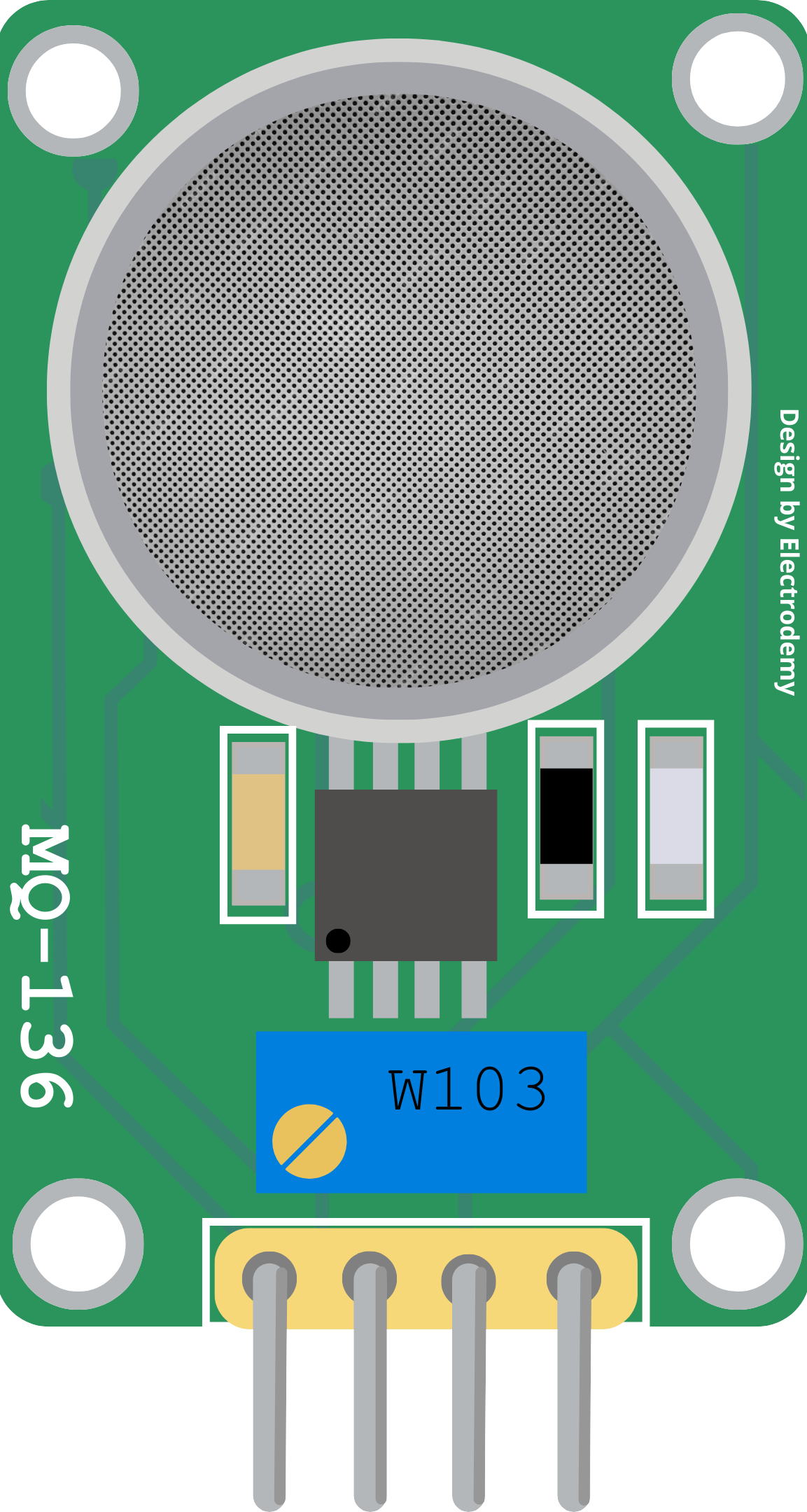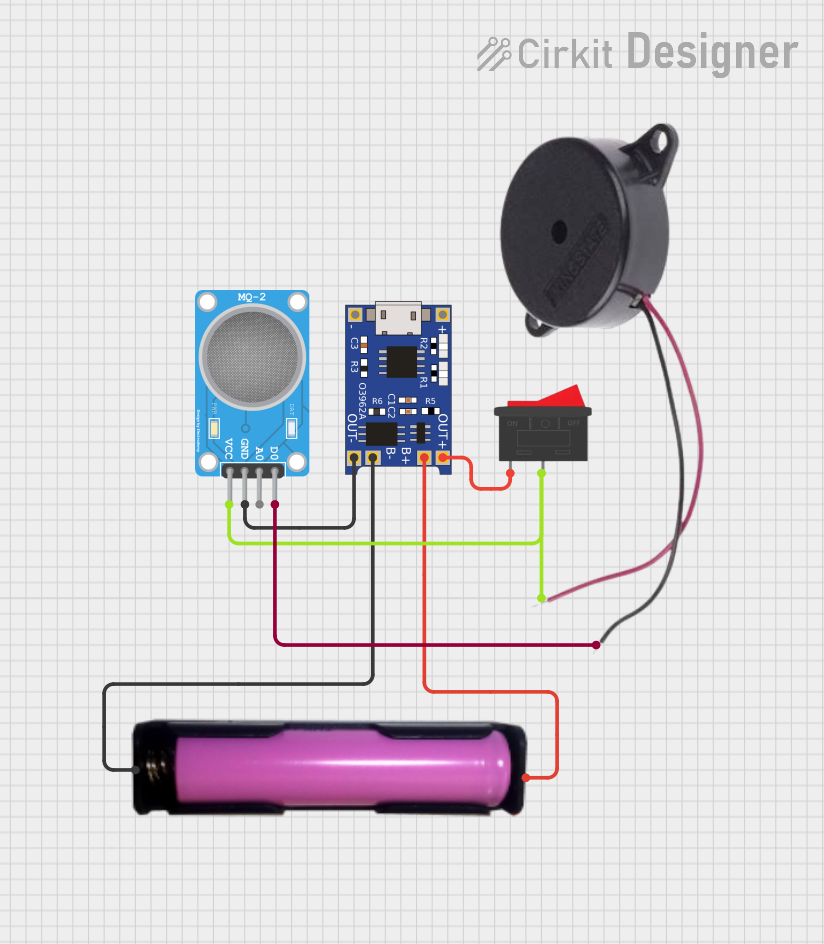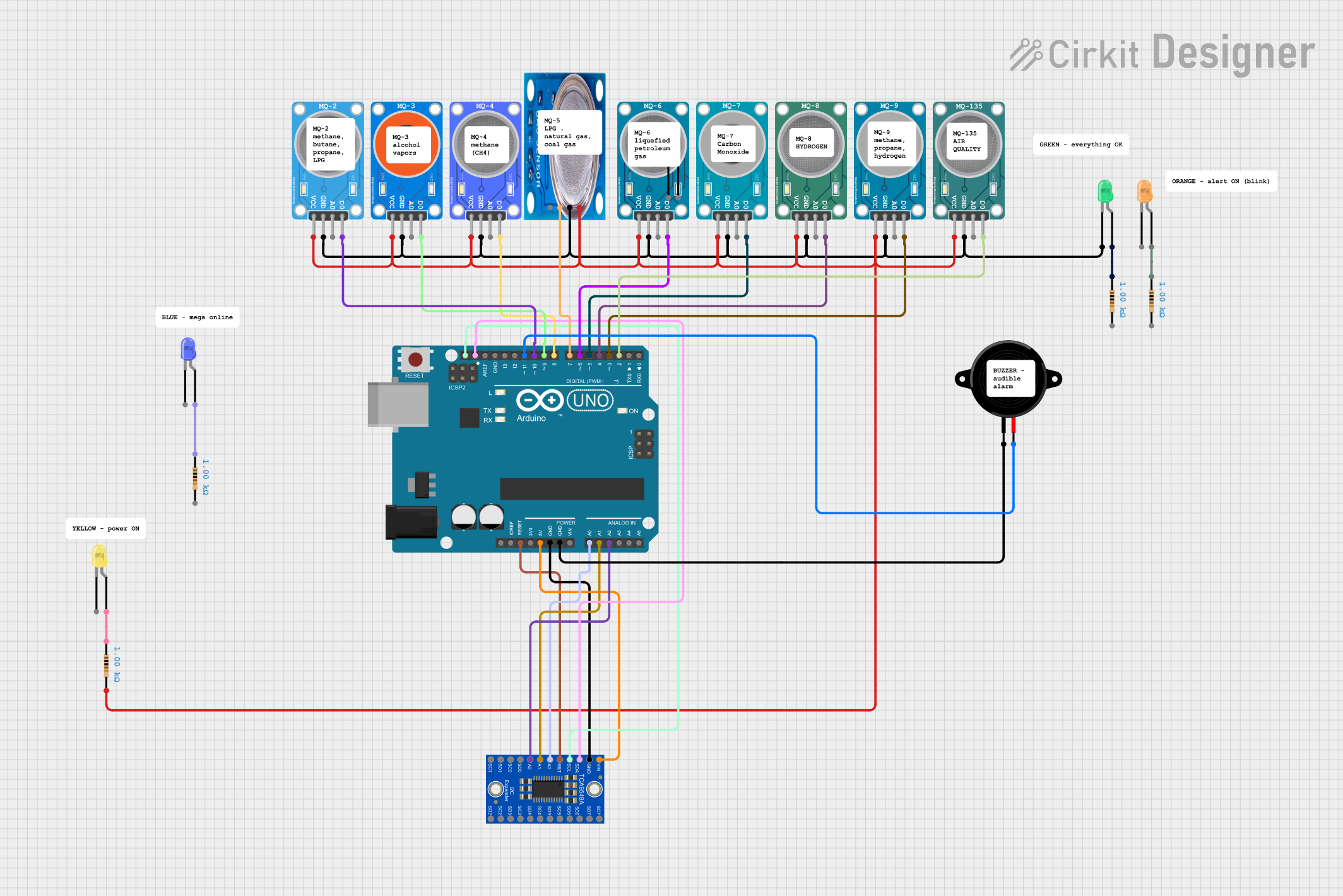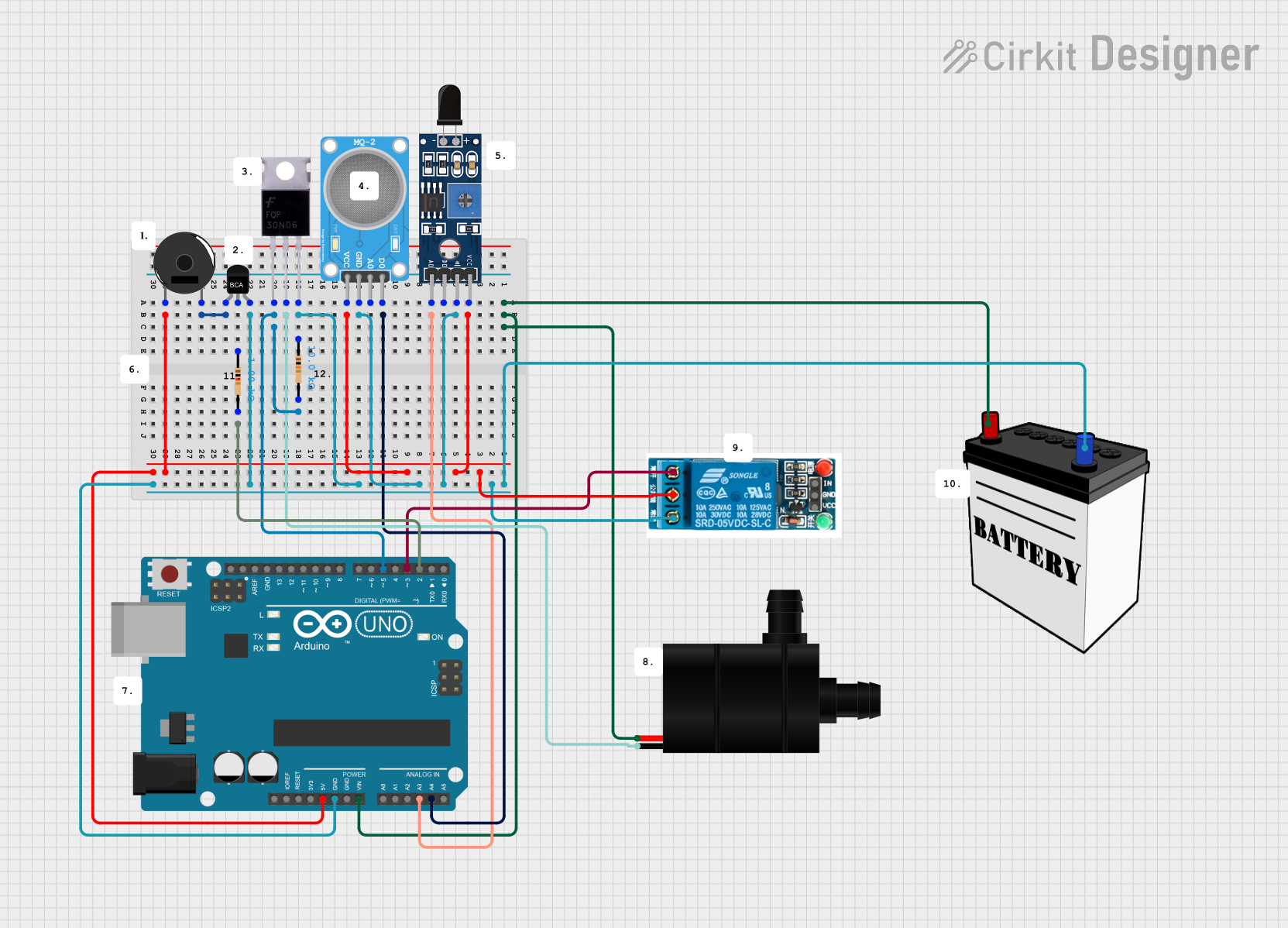
How to Use MQ-136 SENSOR HYDROGNE SULFIDE GAS V2: Examples, Pinouts, and Specs

 Design with MQ-136 SENSOR HYDROGNE SULFIDE GAS V2 in Cirkit Designer
Design with MQ-136 SENSOR HYDROGNE SULFIDE GAS V2 in Cirkit DesignerIntroduction
The MQ-136 Hydrogen Sulfide Gas Sensor Module V2 is an analog output sensor designed to detect hydrogen sulfide (H2S) in the air. This sensor is widely used in industrial and environmental applications to monitor H2S levels, which can be toxic and pose health risks at high concentrations. It is also utilized in gas leak detection systems for safety purposes.
Explore Projects Built with MQ-136 SENSOR HYDROGNE SULFIDE GAS V2

 Open Project in Cirkit Designer
Open Project in Cirkit Designer
 Open Project in Cirkit Designer
Open Project in Cirkit Designer
 Open Project in Cirkit Designer
Open Project in Cirkit Designer
 Open Project in Cirkit Designer
Open Project in Cirkit DesignerExplore Projects Built with MQ-136 SENSOR HYDROGNE SULFIDE GAS V2

 Open Project in Cirkit Designer
Open Project in Cirkit Designer
 Open Project in Cirkit Designer
Open Project in Cirkit Designer
 Open Project in Cirkit Designer
Open Project in Cirkit Designer
 Open Project in Cirkit Designer
Open Project in Cirkit DesignerCommon Applications
- Industrial safety systems
- Environmental air quality monitoring
- Gas leak detectors
- Agricultural soil monitoring for sulfur deficiency
Technical Specifications
Key Technical Details
- Target Gas: Hydrogen sulfide (H2S)
- Operating Voltage: 5V DC
- Heating Voltage: 5V ±0.1
- Load Resistance: Adjustable
- Heating Resistance: 31Ω ± 3Ω (at room temperature)
- Heating Power: ≤900mW
- Detection Range: 1ppm to 200ppm H2S
- Preheat Duration: 24 hours before initial use
- Operating Temperature: -20°C to 50°C
- Operating Humidity: 95% RH or less (non-condensing)
Pin Configuration and Descriptions
| Pin Number | Pin Name | Description |
|---|---|---|
| 1 | VCC | Connect to 5V power supply |
| 2 | GND | Connect to ground |
| 3 | DOUT | Digital output (TTL logic level) |
| 4 | AOUT | Analog output (proportional to H2S concentration) |
Usage Instructions
Integration with a Circuit
- Connect the VCC pin to a 5V power supply.
- Connect the GND pin to the ground of the power supply.
- The AOUT pin provides an analog voltage output that is proportional to the detected H2S concentration. Connect this pin to an analog input on your microcontroller, such as an Arduino UNO.
- Optionally, the DOUT pin can be used for a simple high/low signal when the gas concentration exceeds a certain threshold. This threshold can be set using the onboard potentiometer.
Important Considerations and Best Practices
- Ensure the sensor is preheated for at least 24 hours before initial use for accurate readings.
- Avoid exposure to high concentrations of corrosive gases, as they may damage the sensor.
- Do not use the sensor in extremely high or low temperatures and humidity levels outside the specified range.
- Calibrate the sensor periodically to maintain accuracy.
- Implement proper ventilation when testing the sensor to prevent accumulation of toxic gases.
Example Code for Arduino UNO
// MQ-136 Hydrogen Sulfide Gas Sensor Example Code
int analogPin = A0; // Analog input pin connected to AOUT on the sensor
int sensorValue = 0; // Variable to store the sensor value
void setup() {
Serial.begin(9600); // Initialize serial communication at 9600 baud rate
}
void loop() {
sensorValue = analogRead(analogPin); // Read the sensor value
Serial.print("H2S Gas concentration: ");
Serial.println(sensorValue); // Print the sensor value to the serial monitor
delay(1000); // Wait for 1 second before reading again
}
Troubleshooting and FAQs
Common Issues
- Inaccurate Readings: Ensure the sensor has been preheated for the recommended time and is calibrated correctly.
- No Readings: Check the power supply and wiring connections to the sensor.
- Sensor Not Responding: Verify that the sensor is within its operating temperature and humidity range.
Solutions and Tips
- Calibration: Expose the sensor to a known concentration of H2S gas and adjust the onboard potentiometer until the output matches the expected value.
- Sensor Cleaning: Periodically clean the sensor's exterior with a soft, dry cloth to remove dust and other contaminants.
- Ventilation: Always test the sensor in a well-ventilated area to prevent the accumulation of gases.
FAQs
Q: How often should the sensor be calibrated? A: Calibration frequency depends on the usage and the environment. It is recommended to calibrate the sensor every 6 months or whenever there is a significant change in the environmental conditions.
Q: Can the sensor detect other gases? A: The MQ-136 is designed specifically for H2S gas detection. While it may respond to other gases, it is not recommended to use it for detecting gases other than H2S.
Q: What is the lifespan of the sensor? A: The typical lifespan of the MQ-136 sensor is about 2 years, depending on the operating conditions and exposure to gases.